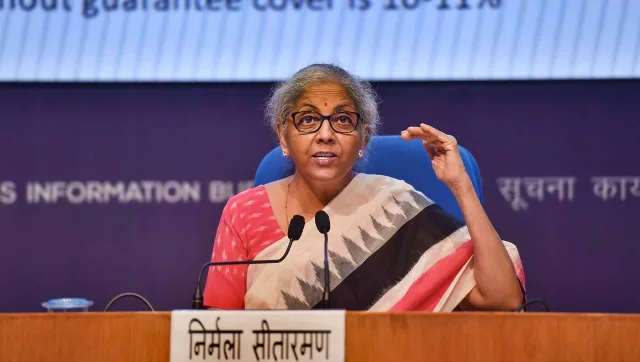SRINAGAR: The latest Budget for the Union Territory (UT) of J&K could be a matter of envy for the people on the other side of the border, PoK, as the Indian Parliament approved (March 23) a mammoth Rs. 1.42 lakh crore for FY 2022-23 with several new development initiatives.
The Union Finance Minister of India Nirmala Setharaman asserted before the members of the Lok Sabha, the Lower House of the Indian Parliament that after the abrogation of Article 370, the UT has seen justice, democracy and economic development reaching the people.
The Central Government of India had allocated Rs. 35,581.44 crore in the Budget for FY 2022-23 to J&K as part of the Central government’s assistance, grants and loans.
The development work in J&K is catching momentum much to the envy of the other side of Kashmir i.e. PoK. The total expenditure in the J&K FY 2022-23 Budget has been estimated at Rs. 1,12,950 crore which includes Rs. 41,335 crore of development expenditure. Out of the total expenditure of about Rs. 32,495 crore would go to salaries, Rs. 9,780 crore (9 per cent) on pensions, Rs. 5,000 crore on power purchase and Rs. 3,319 core on centrally sponsored schemes.
The Budget estimates show that Rs. 68,206 crores (34 per cent) of the income of the UT would come from the centre as grants. This explains how central J&K is to the development plan of the Government of India.
India has not only instituted democracy and decentralisation through Panchayati Raj in its Union Territory of Jammu and Kashmir but has also delivered fast-paced development in the region. This is evidenced by increased funding of physical infrastructure including rail, road and power plants, and also in social infrastructures like hospitals and educational institutions.
The people in PoK have reasons to envy the UT of J&K on the Indian side for the importance that the latter receives in India’s development plan as against the indifference and step-motherly treatment of the Pak government towards PoK. No wonder occupied territories are prone to getting discriminatory treatment, be it PoK or Tibet. Despite the iron curtain of Pakistan and China, the information regarding discontentment in both regions trickles out.
In 2021-22, the J&K Budget made an allocation of Rs. 786 crore, to the lead sector of the State economy, Rs. 500 crore higher than the previous year. The tourist footfall in 2021 was the highest in seven years with 6.65 lakh tourists visiting UT. In a bid to revamp tourism in the Anantnag district of South Kashmir, the J&K administration started building infrastructure under the Prime Minister’s development project at a cost of 3.5 crores.
Kashmir is well on its way to becoming a model State with investments in infrastructure, tourism, social welfare and agriculture. Today there are investment proposals worth Rs. 31,000 crore under consideration and schemes worth Rs. 28,400 crore. All these programmes are likely to generate employment for over 5 lakh people.
Despite differences among the political parties on how to administer J&K, the basic underlying philosophy remains entrenched in former Prime Minister Atal Bihari Bajpai’s philosophy of Insaniyat (humanity), Jamhuriyat (democracy) and Kashmiriyat (Kashmir identity) in all the alternative models espoused by the political parties of India.
After the abrogation of Article 370, six agreements with global investors were signed at Expo 2020 Dubai for investment in real estate, infrastructure, tourism, healthcare, manpower employment sector among others.
More than 53 projects are at different stages of completion at a cost of Rs. 58,477 crore in various sectors such as roads, power, health, education, tourism, agriculture and skill development. If the present pace of development in J&K is maintained, it would be developed as the Switzerland of South Asia very soon. (ANI)







